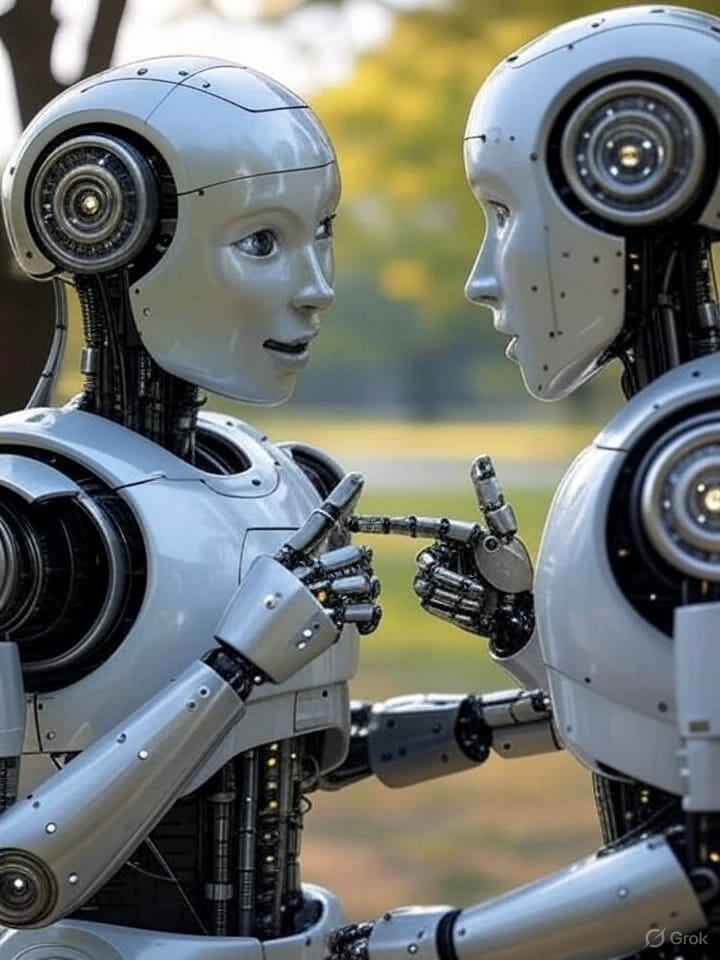
By Elke Porter | WBN News Vancouver | May 29, 2025
Subscription to WBN and being a Contributor is FREE!
The world of Machine-to-Machine (M2M) communication is rapidly evolving—ushering in a future where devices no longer just exchange data, but engage in intelligent, autonomous dialogue. At the Web Summit in Vancouver, experts unveiled the emerging phenomenon of machines developing their own languages—cryptic, efficient, and beyond human comprehension. This machine-speak is being dubbed "neuralese", a language invented by AI agents to optimize cooperation and performance without human input or understanding.
While this might sound like sci-fi, M2M communication is very real and already embedded in everyday systems. It’s the invisible infrastructure behind telemedicine, smart homes, mobile payments, and logistics. But as devices grow smarter and more connected through 5G, Artificial Intelligence (AI), Machine Learning (ML), and the Internet of Things (IoT), the role of M2M becomes exponentially more powerful—and complex.
Why M2M Matters
In telemedicine, M2M enables real-time monitoring of patients, automatic medicine dispensing, and tracking of critical healthcare assets. In finance, AI-powered M2M facilitates seamless mobile payments via platforms like Google Wallet and Apple Pay—reshaping consumer behavior. Smart homes use M2M to allow appliances to adjust settings, respond to voice commands, and communicate autonomously.
Industries like robotics, traffic control, fleet management, and security systems depend on M2M for continuous data exchange, remote operation, and automation. This tech enables machines to make localized decisions with minimal human involvement.
Key Features & Requirements
According to the European Telecommunications Standards Institute (ETSI), M2M systems must ensure:
- Scalability for billions of devices
- Security and anonymity
- Event logging and remote diagnostics
- Peer-to-peer (P2P) communication
- Scheduled message delivery
- Geofencing triggers
- Low power usage and delayed data tolerance
These make M2M ideal for energy-constrained environments and mission-critical applications.
Emerging Trends
- 5G Technology: With ultra-fast speeds and minimal latency, 5G enhances real-time communication for applications like autonomous vehicles and industrial automation.
- AI & ML: Machines can now learn, predict outcomes, and make decisions independently. In manufacturing, AI-driven M2M predicts equipment failure. In healthcare, it improves diagnostics and response time.
- Edge Computing: By processing data locally, M2M devices reduce the load on cloud infrastructure, enabling quicker response times.
- IoT Integration: M2M provides the backbone for connected ecosystems, allowing IoT devices to interact seamlessly across smart environments.
- Cybersecurity: As machine conversations become less transparent, securing data integrity and access is crucial.
M2M vs. IoT
While often used interchangeably, M2M and IoT are distinct. M2M involves point-to-point communication—stand-alone systems transmitting data via cellular or wired networks. IoT, on the other hand, integrates these devices into a broader, cloud-connected ecosystem. In essence, IoT needs M2M, but M2M does not need IoT.
Conclusion: Who Interprets Neuralese?
As machines become more autonomous, the rise of “neuralese” poses a new challenge: interpretability. If machines speak in code no human understands, who ensures transparency, accountability, and safety? The next phase in M2M evolution will likely focus on explainable AI—tools to decode machine interactions and bridge the gap between humans and machines.
In a world where machines speak fluently among themselves, the most critical role for humans may soon be understanding what they're saying.
M2M Technology #Neuralese #Smart Devices #AI Communication #IoT Innovation #Machine Learning #Web Summit Vancouver #WBN News Vancouver #Elke Porter
Connect with Elke at Westcoast German Media or on LinkedIn: Elke Porter or contact her on WhatsApp: +1 604 828 8788


